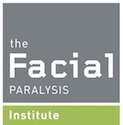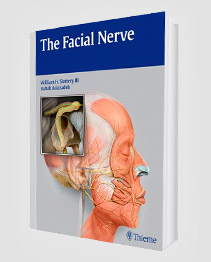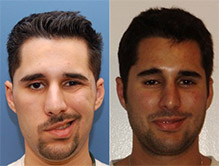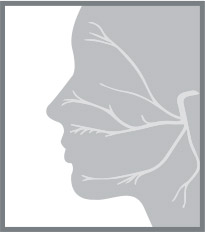
Bell’s Palsy Is The Leading Cause of Facial Paralysis
Bell’s Palsy: One of the Leading Facial Paralysis Causes
Bell’s palsy is a neurological disorder that can lead to facial paralysis or weakness on one side of the face. It is also one of the primary facial paralysis causes in the United States.
What Causes Facial Paralysis and Bell’s Palsy?
Facial paralysis causes vary. An individual can experience facial paralysis symptoms due to facial nerve damage relating to any of the following issues:
- Congenital condition
- Disease
- Trauma
Bell’s palsy is a disease that causes facial paralysis symptoms. It disrupts the facial nerve and interrupts messages that the brain sends to the facial muscles. When this happens, an individual can experience facial paralysis or weakness.
Is Bell’s Palsy Common?
The National Institute of Neurological Disorders and Stroke reports Bell’s palsy affects about 40,000 people in the United States annually. The condition affects men and women of all ages but is less likely to impact individuals under the age of 15 or above the age of 60.
What Causes Facial Nerve Paralysis Related to Bell’s Palsy?
There are several risk factors linked to Bell’s palsy. Research indicates pregnant women face a greater risk of being diagnosed with the condition and experiencing associated facial paralysis symptoms during the third trimester or one week after giving birth. Additionally, those who are dealing with a cold, flu, or other respiratory ailments may be more prone than others to the condition.
Bell’s Palsy Symptoms: Here’s What You Need to Know
With Bell’s palsy, an individual can experience sudden paralysis of the facial muscles. This often leads to facial drooping and hampers an individual’s ability to close the eye on the paralyzed side of the face. Other symptoms can include:
- Drooling
- Headache
- Sensitivity to sound on the affected side of the face
- Jaw pain
- Pain behind the ear on the affected side of the face
Bell’s palsy sometimes affects the nerves on both sides of the face, too. However, with a safe, effective treatment, an individual can address their symptoms before permanent facial paralysis occurs.
How to Treat Bell’s Palsy Symptoms
If a person is dealing with Bell’s palsy symptoms, it is important to consult with a physician immediately. At this time, a physician evaluates a patient’s symptoms and develops a treatment plan.
Several tests are commonly performed to evaluate a patient’s symptoms. These tests include:
- Ear, nose, and throat (ENT) evaluation
- Tearing test
- Neurologic assessment
- Hearing test
- Vestibular test
The best treatment for Bell’s palsy depends on the patient, the severity of their symptoms, and other factors. Each facial paralysis treatment must be tailored to a patient.
Following an initial Bell’s palsy diagnosis, a patient may receive high-dose steroids or antiviral medications. In most cases, the facial nerve functions will return to normal within about six months. After this time, if a patient is still experiencing facial paralysis symptoms, it is time to meet with a facial nerve expert to determine long-term treatment options.
Can Surgery Be Used to Treat Bell’s Palsy and Other Facial Paralysis Causes?
In the event that steroids or antiviral medications do not help a Bell’s palsy patient alleviate their symptoms, surgery may be considered. At this time, a patient may be eligible for one or more surgical options.
The most innovative long-term Bell’s palsy treatment is called selective neurolysis. It is also referred to as modified selective neurectomy. The procedure, developed by globally recognized facial plastic and reconstructive surgeon Dr. Babak Azizzadeh, is the first permanent Bell’s palsy treatment.
During a selective neurolysis procedure, Dr. Azizzadeh maps out the facial nerves and muscles and selectively deactivates any nerves that are counterproductive to a normal smile and facial movements. This leads to spontaneous facial reanimation, as well as a natural-looking smile.
Selective neurolysis is performed as an outpatient procedure. It has less downtime and fewer risks in contrast to similar facial paralysis surgeries. Plus, Bell’s palsy patients may see the initial results of a selective neurolysis procedure as soon as the day after surgery.
How Can Botox Be Used to Treat Bell’s Palsy?
For patients who want to treat Bell’s palsy without going under the knife, Botox injections can be used. These injections can be administered in a matter of minutes and help patients regain the ability to make natural facial expressions.
Botox is one of the most common treatment options for Bell’s palsy. Although Botox is often a top choice for cosmetic procedures, it has also been shown to help patients restore facial symmetry and improve their facial appearance.
Botox injections temporarily relax hyperactive muscles in the face. They can be used in combination with neuromuscular retraining, which coordinates proper muscle movements.
What Is Neuromuscular Retraining for Bell’s Palsy?
Neuromuscular retraining can be a great treatment for Bell’s palsy in the appropriate candidate. The therapy gradually recreates the brain-to-nerve-to-muscle routine to help patients regain control of facial movements and expressions. It is provided by an expert physical therapist, who evaluates a patient and offers exercise recommendations based on this individual’s symptoms.
Each neuromuscular retraining program is customized to a Bell’s palsy patient and must be followed closely. Once a patient learns the proper facial exercises, he or she can perform them independently. And over time, this patient can improve their facial muscle strength and coordination.
Are Treatments for Bell’s Palsy and Other Facial Paralysis Causes Safe and Effective?
Research shows approximately 85 percent of patients recover from Bell’s palsy without any lingering health issues. It also indicates 10 percent of Bell’s palsy patients deal with synkinesis and partial facial paralysis after treatment, and the remaining 5 percent require additional support.
Ultimately, the safety and effectiveness of treatment for Bell’s palsy and other facial paralysis causes is predicated on a variety of factors. If a patient explores immediate treatment at the first sign of facial paralysis symptoms, he or she can meet with a doctor to find out if Bell’s palsy is causing these issues. From here, the patient can get a personalized diagnosis and treatment. Over time, the patient can work with their doctor to safely and effectively address their symptoms and prevent them from recurring.
What to Do If Bell’s Palsy Symptoms Do Not Subside After Initial Diagnosis and Treatment
For people who have been dealing with Bell’s palsy symptoms for eight months or longer, Dr. Azizzadeh can help. Dr. Azizzadeh is a dual board-certified facial plastic and reconstructive surgeon who offers personalized treatment options. He is happy to meet with a patient, learn about their symptoms, and create a custom treatment plan. Then, Dr. Azizzadeh will work diligently to help this patient address their symptoms.
Schedule a Treatment Consultation with Dr. Azizzadeh Today
Diagnosing and treating Bell’s palsy and other facial paralysis causes can be challenging. Fortunately, Dr. Azizzadeh can help patients identify the root cause of their facial paralysis. He can also provide a treatment plan designed to deliver long-lasting symptomatic relief.
Dr. Azizzadeh is available to meet with patients coping with long-term facial paralysis symptoms. To set up a treatment consultation with Dr. Azizzadeh, please contact us online or call us today at (310) 657-2203.
Request your consultation with Dr. Azizzadeh today
Call us at (310) 657-2203 to schedule an appointment.
Schedule a Consultation




